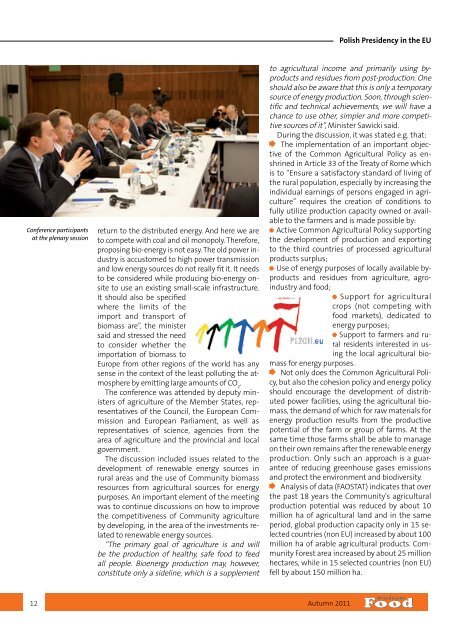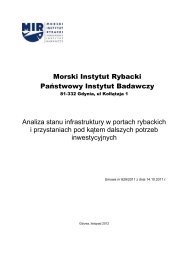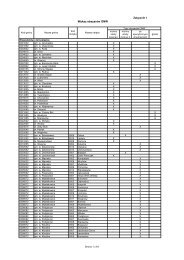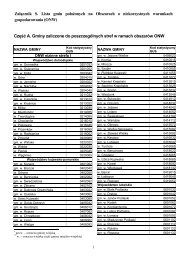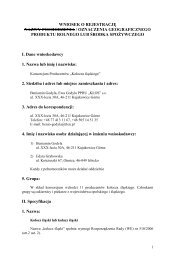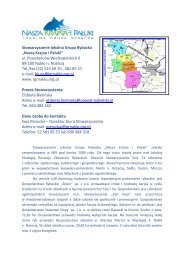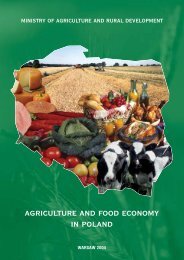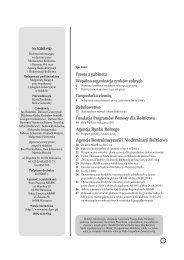download file
download file
download file
Create successful ePaper yourself
Turn your PDF publications into a flip-book with our unique Google optimized e-Paper software.
Polish Presidency in the EU<br />
Conference participants<br />
at the plenary session<br />
return to the distributed energy. And here we are<br />
to compete with coal and oil monopoly. Therefore,<br />
proposing bio-energy is not easy. The old power industry<br />
is accustomed to high power transmission<br />
and low energy sources do not really fit it. It needs<br />
to be considered while producing bio-energy onsite<br />
to use an existing small-scale infrastructure.<br />
It should also be specified<br />
where the limits of the<br />
import and transport of<br />
biomass are”, the minister<br />
said and stressed the need<br />
to consider whether the<br />
importation of biomass to<br />
Europe from other regions of the world has any<br />
sense in the context of the least polluting the atmosphere<br />
by emitting large amounts of CO 2<br />
.<br />
The conference was attended by deputy ministers<br />
of agriculture of the Member States, representatives<br />
of the Council, the European Commission<br />
and European Parliament, as well as<br />
representatives of science, agencies from the<br />
area of agriculture and the provincial and local<br />
government.<br />
The discussion included issues related to the<br />
development of renewable energy sources in<br />
rural areas and the use of Community biomass<br />
resources from agricultural sources for energy<br />
purposes. An important element of the meeting<br />
was to continue discussions on how to improve<br />
the competitiveness of Community agriculture<br />
by developing, in the area of the investments related<br />
to renewable energy sources.<br />
“The primary goal of agriculture is and will<br />
be the production of healthy, safe food to feed<br />
all people. Bioenergy production may, however,<br />
constitute only a sideline, which is a supplement<br />
to agricultural income and primarily using byproducts<br />
and residues from post-production. One<br />
should also be aware that this is only a temporary<br />
source of energy production. Soon, through scientific<br />
and technical achievements, we will have a<br />
chance to use other, simpler and more competitive<br />
sources of it”, Minister Sawicki said.<br />
During the discussion, it was stated e.g. that:<br />
The implementation of an important objective<br />
of the Common Agricultural Policy as enshrined<br />
in Article 33 of the Treaty of Rome which<br />
is to “Ensure a satisfactory standard of living of<br />
the rural population, especially by increasing the<br />
individual earnings of persons engaged in agriculture”<br />
requires the creation of conditions to<br />
fully utilize production capacity owned or available<br />
to the farmers and is made possible by:<br />
Active Common Agricultural Policy supporting<br />
the development of production and exporting<br />
to the third countries of processed agricultural<br />
products surplus;<br />
Use of energy purposes of locally available byproducts<br />
and residues from agriculture, agroindustry<br />
and food;<br />
Support for agricultural<br />
crops (not competing with<br />
food markets), dedicated to<br />
energy purposes;<br />
Support to farmers and rural<br />
residents interested in using<br />
the local agricultural biomass<br />
for energy purposes.<br />
Not only does the Common Agricultural Policy,<br />
but also the cohesion policy and energy policy<br />
should encourage the development of distributed<br />
power facilities, using the agricultural biomass,<br />
the demand of which for raw materials for<br />
energy production results from the productive<br />
potential of the farm or group of farms. At the<br />
same time those farms shall be able to manage<br />
on their own remains after the renewable energy<br />
production. Only such an approach is a guarantee<br />
of reducing greenhouse gases emissions<br />
and protect the environment and biodiversity.<br />
Analysis of data (FAOSTAT) indicates that over<br />
the past 18 years the Community's agricultural<br />
production potential was reduced by about 10<br />
million ha of agricultural land and in the same<br />
period, global production capacity only in 15 selected<br />
countries (non EU) increased by about 100<br />
million ha of arable agricultural products. Community<br />
Forest area increased by about 25 million<br />
hectares, while in 15 selected countries (non EU)<br />
fell by about 150 million ha.<br />
12<br />
Autumn 2011


